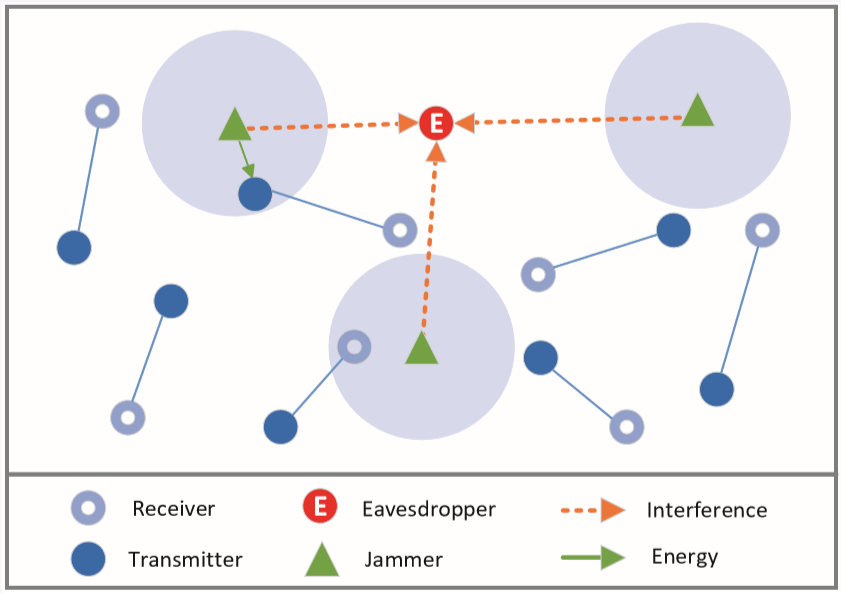When Friendly Jamming Meets Wireless Energy Transfer
Friendly-jamming schemes can effectively reduce the eavesdropping risk in wireless networks by generating sufficient interference to prevent eavesdroppers from snooping confidential communications. However, this type of anti-eavesdropping schemes can also affect the normal communications due to the interference to legitimate users. On the other hand, Wireless Energy Transfer (WET) technology has received much attention recently since WET allows a node to obtain the energy from electromagnetic radiation. In this paper, we integrate the friendly-jamming scheme with WET. We call this scheme as Wireless-Jamming-Energy-Transfer (WJET). This scheme can translate the harmful interference radiated from jammers into the energy harvested by legitimate transmitters. In order to evaluate the effectiveness of this scheme, we establish an analytical model to analyze the transmission probability and the eavesdropping probability. Simulations verify that WJET scheme can simultaneously decrease the eavesdropping probability of eavesdroppers and increase the transmission probability of legitimate users. In addition, we investigate the density of jammers to achieve the optimal transmission probability according to various channel conditions, the density of transmitters and the transmission power of jammers.


Leave a Reply